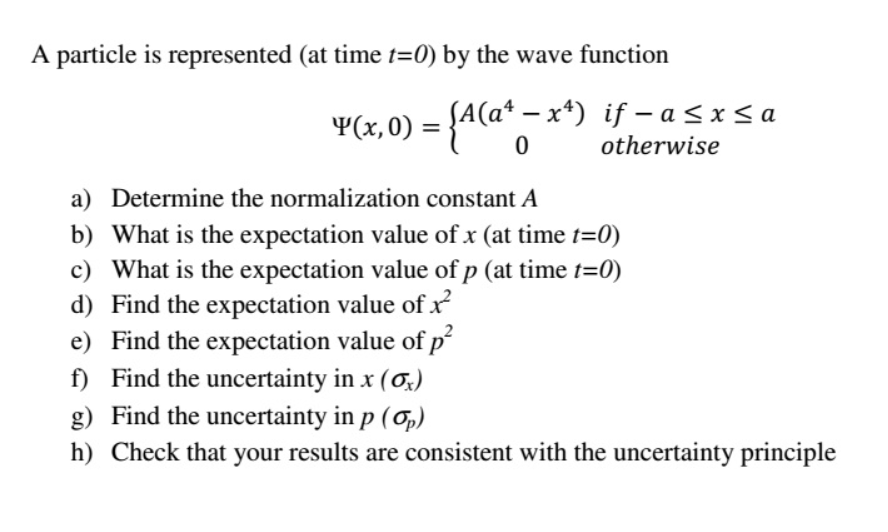A particle is represented (at time t=0) by the wave function -x¹) if- a ≤x≤a otherwise if. ¥(x,0) = {4(a* − xª) 0 a) Determine the normalization constant A b) What is the expectation value of x (at time t=0) c) What is the expectation value of p (at time t=0) d) Find the expectation value of x² e) Find the expectation value of p² f) Find the uncertainty in x (0) g) Find the uncertainty in p (p) h) Check that your results are consistent with the uncertainty principle
A particle is represented (at time t=0) by the wave function -x¹) if- a ≤x≤a otherwise if. ¥(x,0) = {4(a* − xª) 0 a) Determine the normalization constant A b) What is the expectation value of x (at time t=0) c) What is the expectation value of p (at time t=0) d) Find the expectation value of x² e) Find the expectation value of p² f) Find the uncertainty in x (0) g) Find the uncertainty in p (p) h) Check that your results are consistent with the uncertainty principle
Related questions
Question

Transcribed Image Text:A particle is represented (at time t=0) by the wave function
-
¥(x,0) = {A(a¹ − x¹) if − a ≤x≤a
-
0
otherwise
a) Determine the normalization constant A
b)
What is the expectation value of x (at time t=0)
c) What is the expectation value of p (at time t=0)
d) Find the expectation value of x²
e) Find the expectation value of p²
f) Find the uncertainty in x (0)
g) Find the uncertainty in p (p)
h) Check that your results are consistent with the uncertainty principle
Expert Solution
This question has been solved!
Explore an expertly crafted, step-by-step solution for a thorough understanding of key concepts.
This is a popular solution!
Trending now
This is a popular solution!
Step by step
Solved in 3 steps with 3 images
